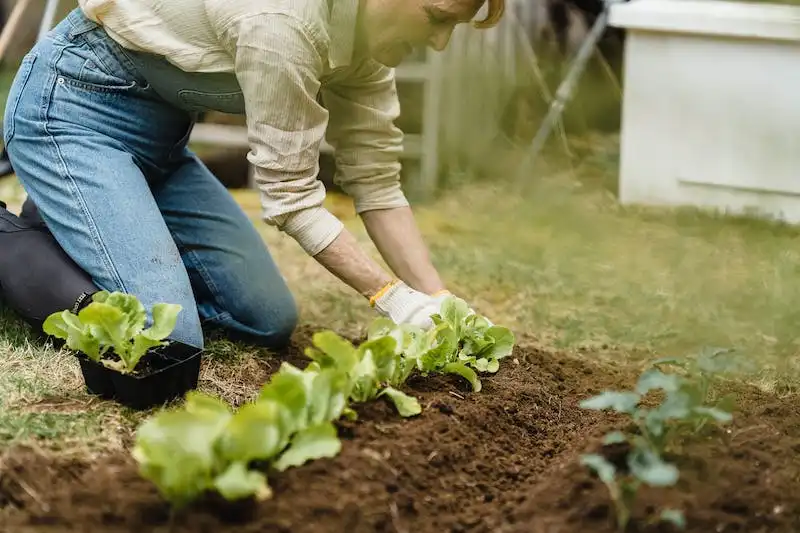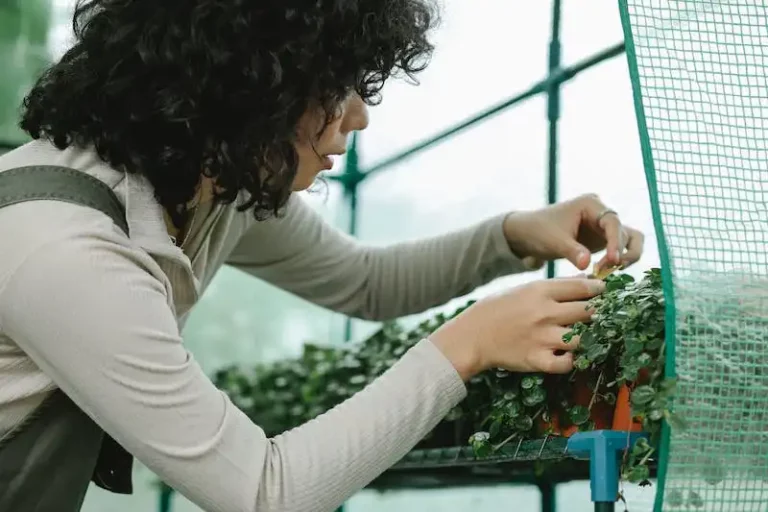African violets (Saintpaulia ionantha) are popular flowering plants known for their beautiful foliage and delicate flowers. However, like any other plants, African violets can be affected by insects and diseases, which can affect their growth and appearance. It is necessary for growers to learn how to manage common problems that can arise and minimize their impact on the plants.
One common pest that can affect African violets is the cyclamen mite, which feeds on the plant’s foliage and can cause spotting and wilting. Another common insect is the aphid, which can cause the leaves to curl and the growth to become stunted. To manage these pests, it is necessary to regularly inspect the plants for signs of infestation and take appropriate measures to control them.
When it comes to disease management, powdery mildew is a common complaint among African violet growers. This fungal disease can appear as a white powdery growth on the leaves and stems of the plants. To prevent powdery mildew, it is important to maintain good air circulation and avoid overhead watering, as the disease thrives in humid conditions. Disinfecting tools and using sterilized soil mixtures can also help prevent the spread of the pathogen.
Proper watering is crucial for the health and growth of African violets. These plants prefer to be watered from the bottom, using a wick or self-watering system. This method ensures that water is absorbed through the roots and helps minimize the risk of fungal diseases caused by wet foliage. It is also important to avoid over-watering, as this can lead to rotting of the roots and leaves.
African violets are often grown indoors, where they can thrive in the right conditions. They prefer bright but indirect light, so placing them near windows with sheer curtains or using grow lights can provide adequate light levels. The plants also prefer temperatures between 60-75 degrees Fahrenheit, with lower levels during the night. African violets are usually grown in soil mixtures specifically formulated for them, which should be well-draining yet moisture-retentive to meet their needs.
In conclusion, growing African violets can be an easy and rewarding experience if proper care and management techniques are followed. By paying attention to their specific needs, such as watering, light levels, and disease prevention, growers can enjoy the beautiful foliage and delicate flowers of these popular plants for years to come.
How To Grow African Violets
Growing African Violets successfully is not as difficult as it may seem. By following a few basic guidelines, you can enjoy the beautiful colors and elegance that these plants provide.
African Violets should be planted in a well-draining soil mixture. They prefer a loose, light mix that allows excess moisture to drain away. A typical African Violet mix consists of peat moss, perlite, and vermiculite, which provides excellent moisture retention while also allowing for proper aeration.
When watering African Violets, it’s important to strike a balance. Overwatering can lead to root rot and other problems, while underwatering can cause the plant to wilt and die. Watering from the bottom by placing the pot in a tray with water and allowing the plant to soak up the moisture is the preferred method.
African Violets require a high level of humidity to thrive, typically around 50-60%. Placing a saucer filled with water near the plant can help increase humidity. Alternatively, you can also use a humidifier or place the plant on a tray with damp pebbles.
Providing proper lighting is crucial for African Violets. They prefer bright, indirect light, such as that received through a north-facing window. Too much direct sunlight can damage the leaves, while too little light can stunt growth and prevent blooming. If necessary, use fluorescent grow lights to supplement the natural light.
African Violets are susceptible to various pests, including aphids, mealybugs, and spider mites. Regularly inspect your plants for signs of insects, such as tiny webs, small holes in the leaves, and discolored foliage. If an infestation is present, treat the plants with appropriate insecticides according to the manufacturer’s instructions.
Another common issue with African Violets is the development of sooty mold. This is a black, thin layer of mold that can form on the leaves, stems, and even flower buds. Sooty mold is usually a result of an infestation of sap-sucking insects, such as whiteflies or aphids. Controlling the insect population will prevent the formation of sooty mold.
Fertilization is crucial for the proper growth and blooming of African Violets. A balanced, water-soluble fertilizer formulated specifically for African Violets should be used. Follow the manufacturer’s recommendations for the frequency and dilution rate. Overfertilizing can lead to weak, leggy plants and poor blooming, while underfertilizing can result in stunted growth.
African Violets can be propagated through leaf cuttings or crown division. Leaf cuttings are the most common method and involve taking a healthy leaf from the plant, dipping it in rooting hormone, and placing it in moist soil. The leaf will develop roots and eventually grow into a new plant. Crown division is recommended for older plants with multiple crowns. It involves carefully separating the crowns into individual plants.
In conclusion, African Violets can be a wonderful addition to any indoor plant collection. By following the guidelines mentioned above and providing the proper care and attention, you can enjoy these beautiful plants and their vibrant colors for years to come.
African Violet Plants – How To Grow African Violets
African violet plants, also known as Saintpaulia, are beautiful flowering plants that can be a great addition to any home or garden. With the right care and attention, you can enjoy these stunning plants for years to come. In this guide, we will provide you with the necessary information on how to grow African violets successfully.
Propagation: To start growing African violets, you can either use seeds or leaf cuttings. Leaf cuttings are the easier and more common method, as they have a higher success rate. Simply select a healthy leaf from the mother plant and cut it off, making sure to include the petiole attached. Place the leaf in a container filled with moist soil or water until roots start to develop. Once roots have formed, you can transfer the cutting to a pot or directly into the ground.
Soil and Watering: African violets require well-draining soil that is slightly acidic. You can use a commercially available African violet potting mix or make your own by combining equal parts peat moss, perlite, and vermiculite. When watering, it is important to avoid getting the leaves wet, as this can lead to disease and powdery mildew. Instead, water the soil directly and make sure to let it dry out slightly between waterings.
Lighting and Temperature: African violets thrive in bright but indirect light. Place them near an east-facing window to provide them with the optimal amount of light. Avoid placing them in direct sunlight, as this can cause leaf burn. In terms of temperature, they prefer a range between 65-75°F (18-24°C). Avoid exposing them to extreme temperatures or drafts.
Fertilization and Humidity: African violets benefit from regular fertilization to ensure healthy growth and abundant flowering. Use a balanced fertilizer specifically designed for African violets and apply it according to the instructions on the package. It is also important to maintain a moderate level of humidity around the plants. You can achieve this by placing a tray filled with water and gravel near the plants. As the water evaporates, it will create a humid environment.
Pest and Disease Management: African violets can sometimes be affected by pests such as aphids, thrips, and fungus gnats. To manage these insect problems, you can use insecticidal soaps or natural predators like ladybugs. In terms of diseases, African violets are prone to powdery mildew, root rot, and crown rot. To prevent these diseases, avoid overwatering and provide good air circulation around the plants.
By following these guidelines, you can ensure that your African violets thrive and bloom beautifully. Remember to give them the care they need and you will be rewarded with stunning flowers in return. Now that you have learned how to grow African violets, it’s time to start your own African violet garden!
Tips for African Violet Care
When it comes to caring for African violets, there are a few important tips to keep in mind. These beautiful plants are known for their bright colors and can bring a touch of beauty to any gardening or indoor space. Here are some tips to help you grow healthy and happy African violets:
- Choose the right location: African violets prefer bright but indirect light conditions. Place them near a window where they can receive filtered sunlight.
- Water carefully: African violets don’t like to have wet feet, so it’s important to carefully water the plant. Water from the bottom by placing the pot in a tray of water and allowing it to soak up the moisture. Avoid getting water on the leaves, as this can cause spotting.
- Feed regularly: African violets need to be fed regularly in order to promote healthy growth and beautiful blooms. Use a specially designed African violet fertilizer and follow the instructions for feeding.
- Repot when necessary: As African violets grow, they may outgrow their pots and need to be repotted. When repotting, use a well-draining soil mix and be careful not to damage the delicate roots.
- Prevent pests: African violets can be affected by pests such as aphids, whiteflies, and mealybugs. To avoid infestations, inspect your plants regularly and take action immediately if you spot any pests. You can use a gentle insecticidal soap or other organic pest control methods to keep the pests away.
- Manage temperature and humidity: African violets prefer slightly warmer temperatures, around 70-80°F (21-27°C). They also prefer moderate humidity levels, so avoid placing them in areas with very dry or humid conditions.
- Avoid overwatering: One common mistake when caring for African violets is overwatering. Too much water can lead to root rot and other problems. It’s important to allow the soil to dry out slightly before watering again.
- Prune regularly: To encourage bushier growth and more blooms, it’s important to prune your African violets regularly. Pinch off the heads of fading flowers and remove any dead or damaged leaves.
- Provide good air circulation: African violets thrive in areas with good air circulation, as it helps prevent the growth of fungi and other diseases. Make sure there is enough space between plants and avoid crowding them.
By following these tips, you can ensure that your African violets stay healthy and vibrant. Remember to observe your plants closely and make adjustments as needed. With proper care and attention, your African violets will reward you with beautiful blooms and a touch of elegance in your home or garden.




